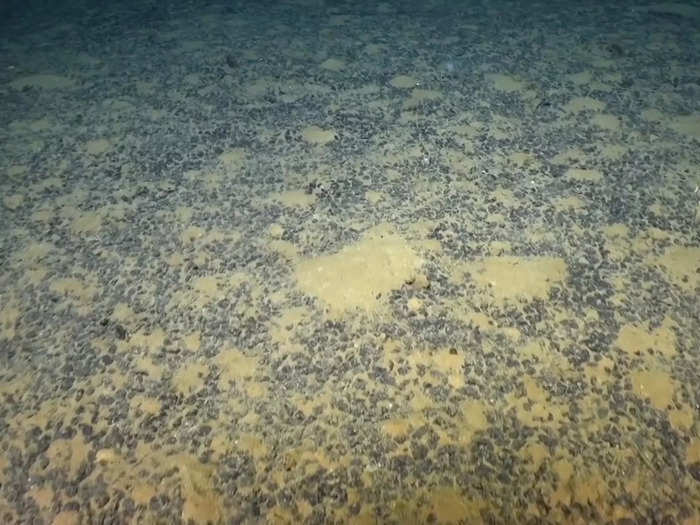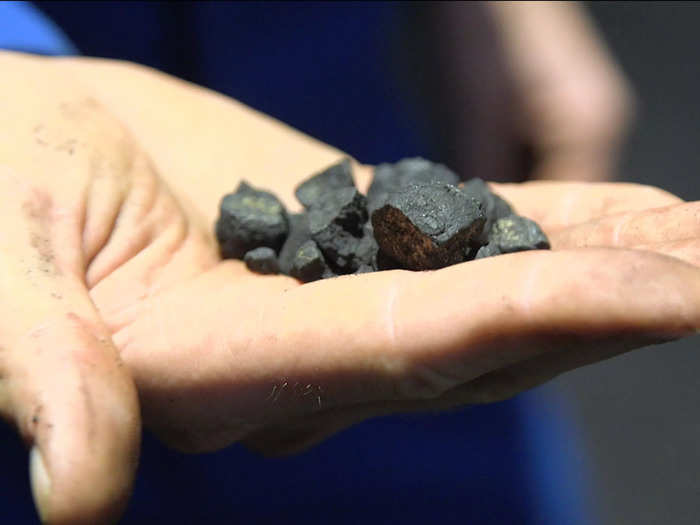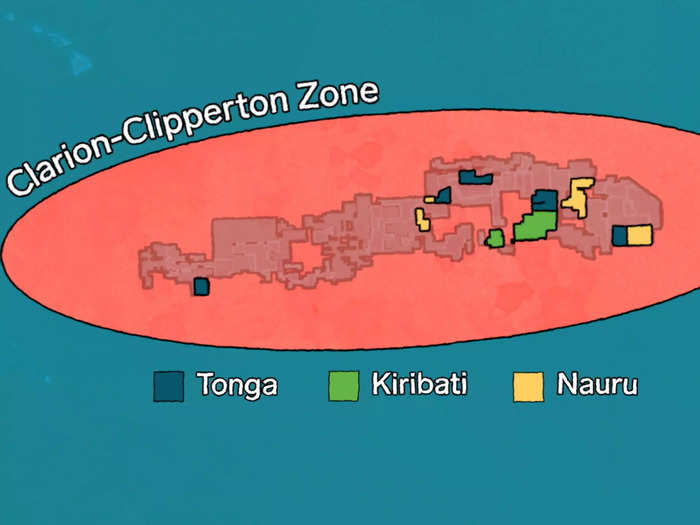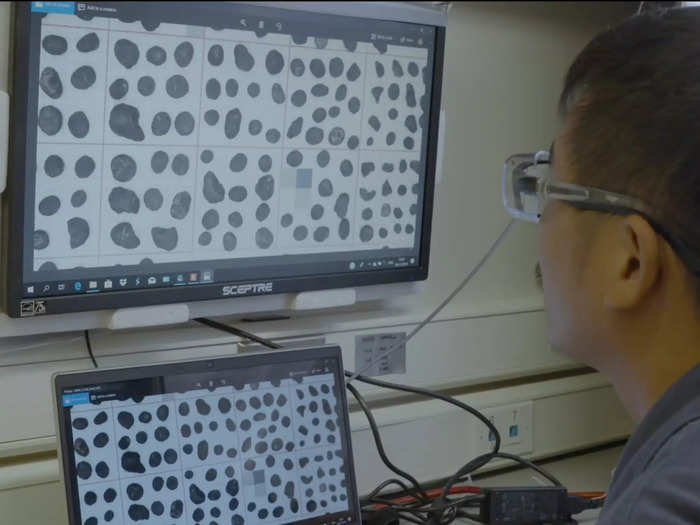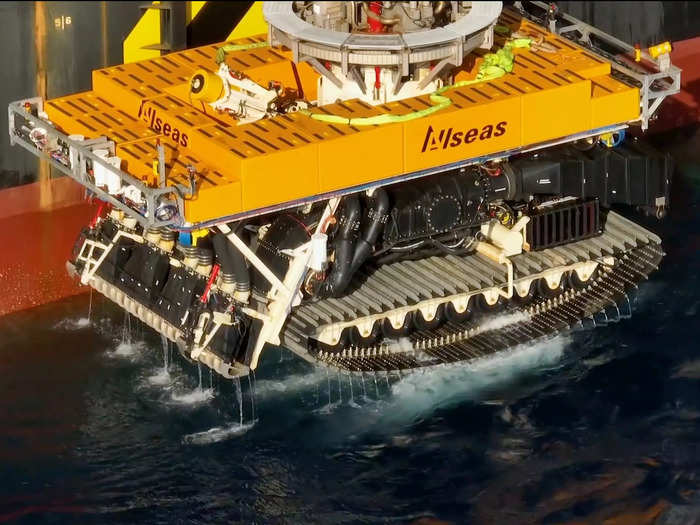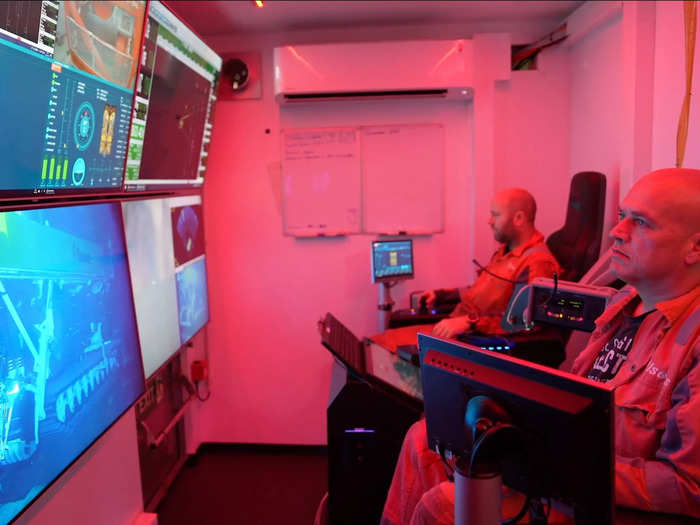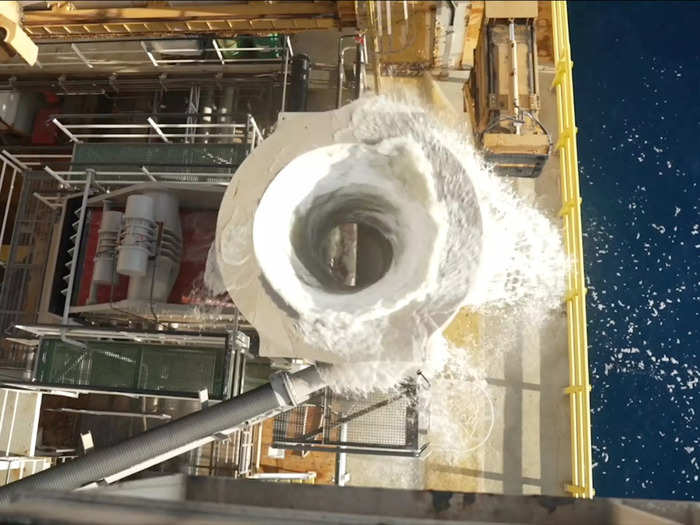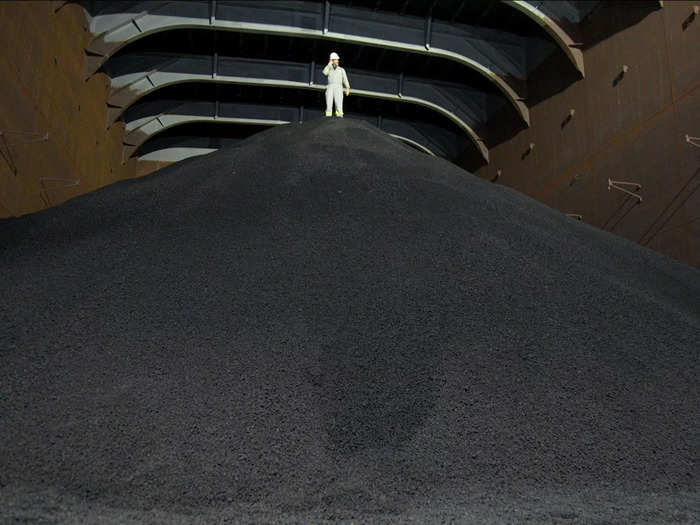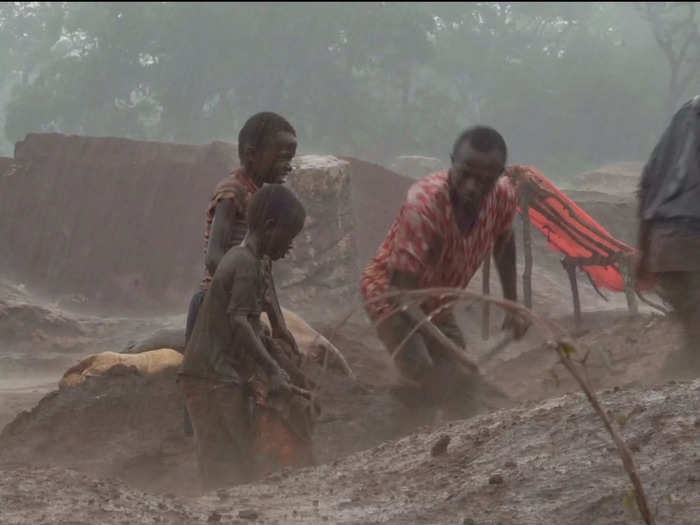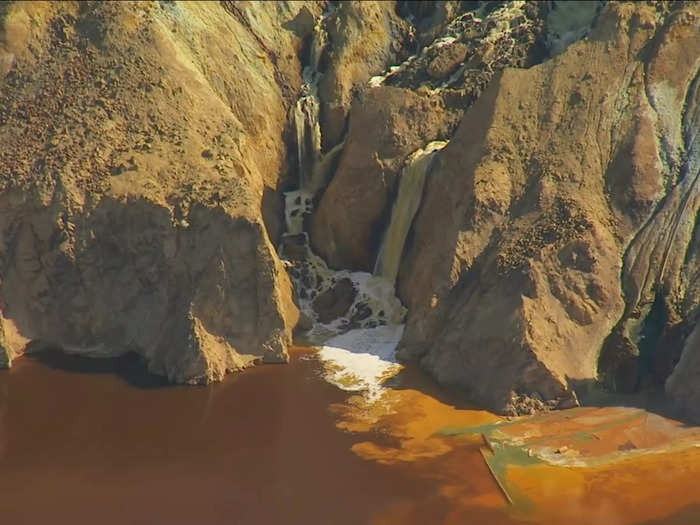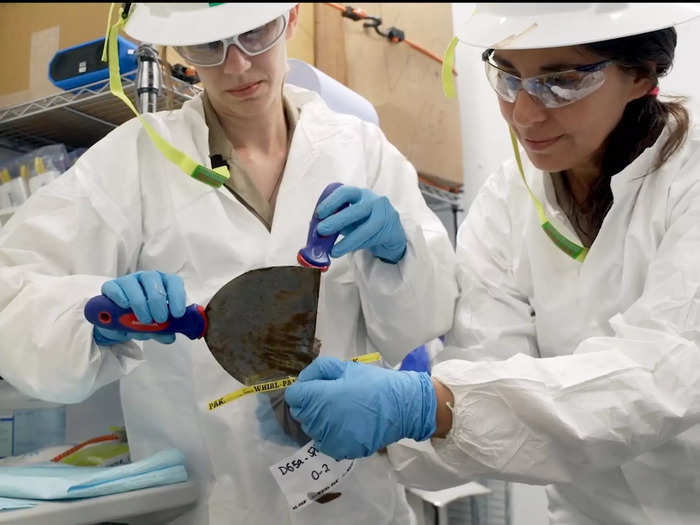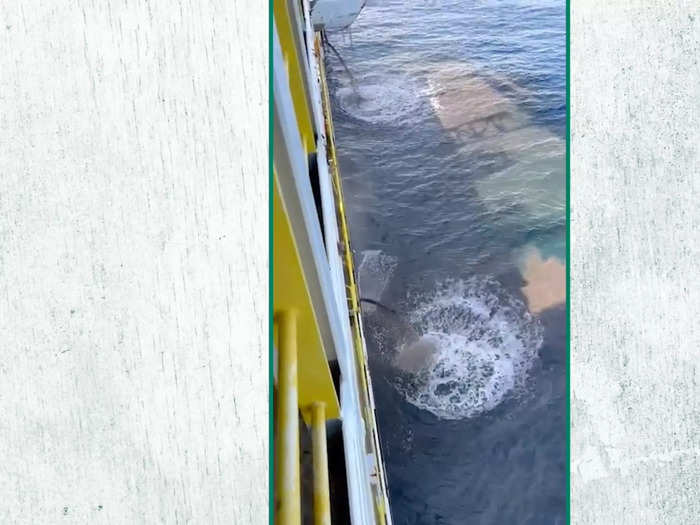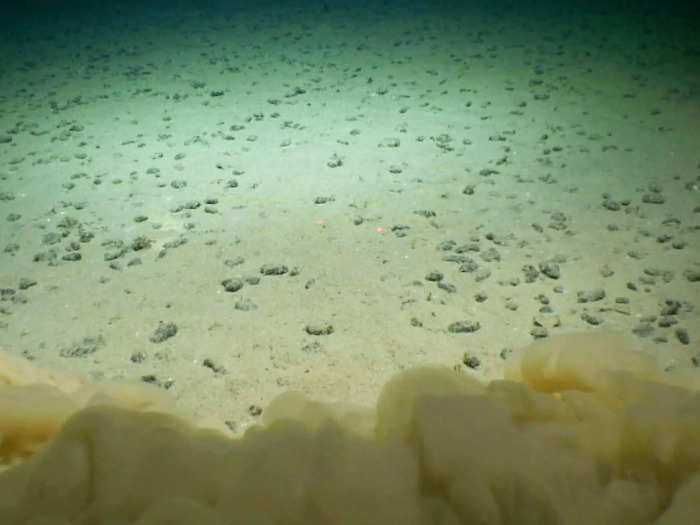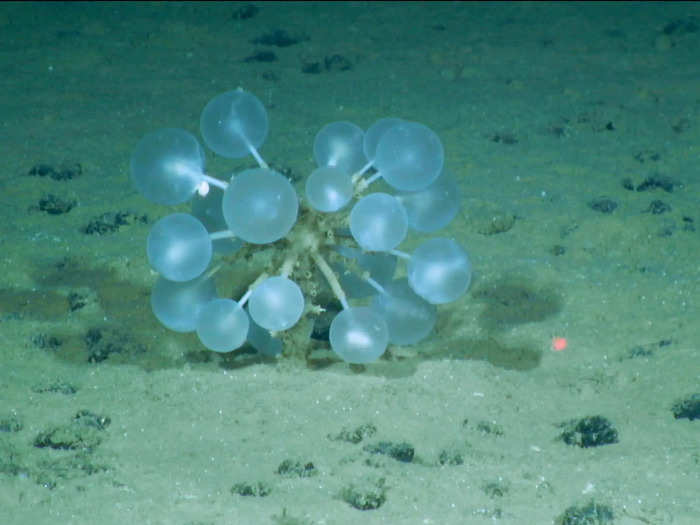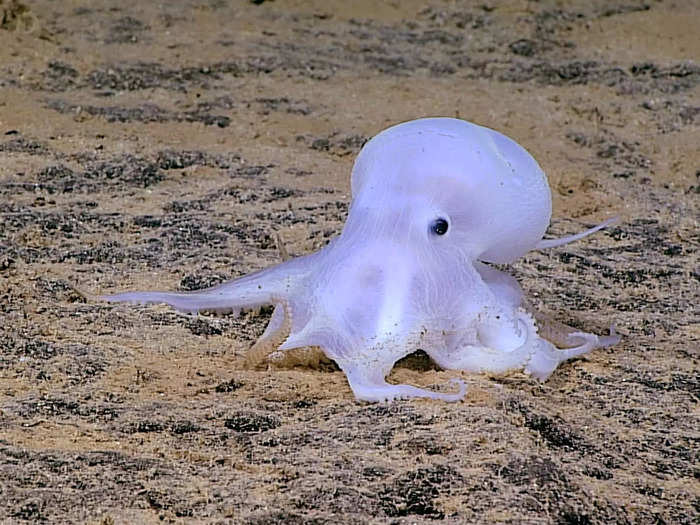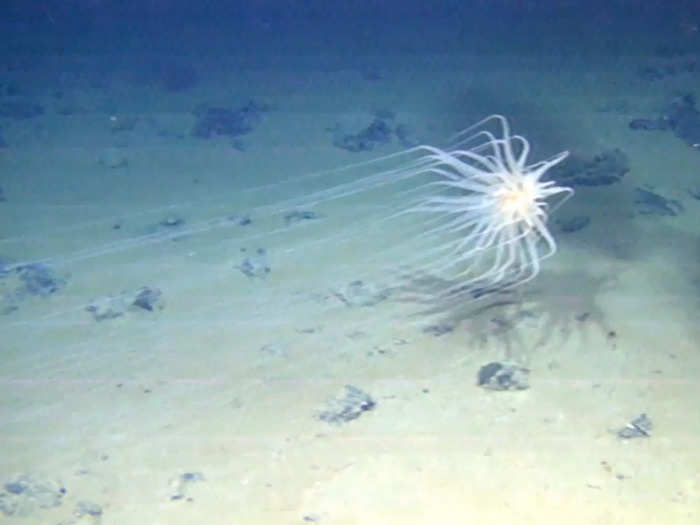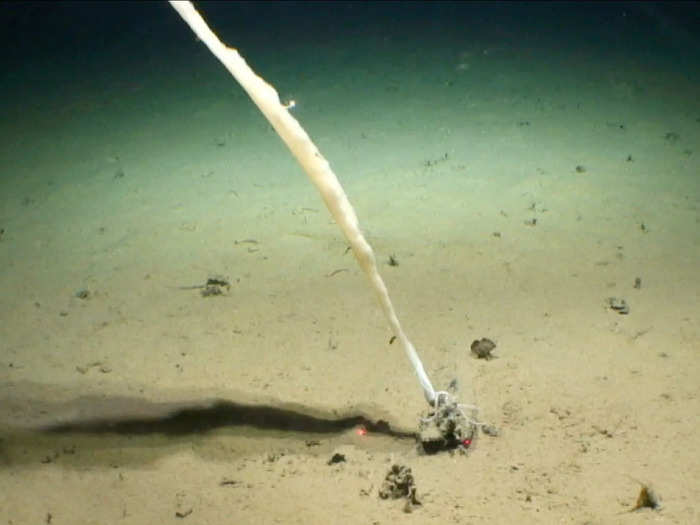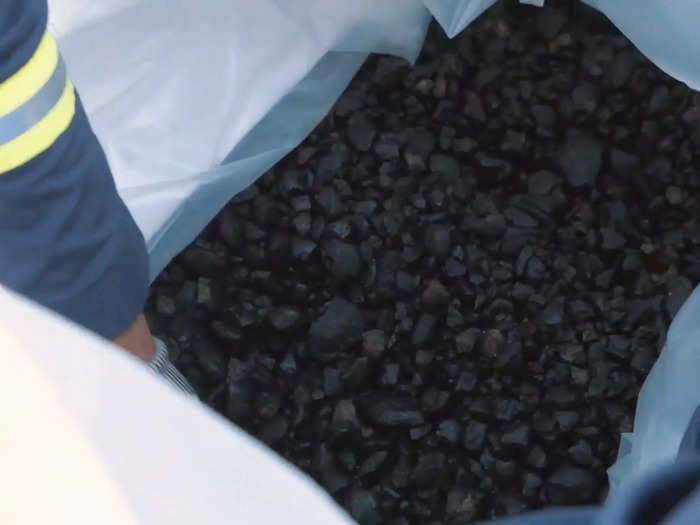The Metals Company CEO, Gerard Barron, stands in front of a large mound of polymetallic nodules.Insider
- The ocean floor has billions of tons of rocks filled with important rare metals used for green technology.
- But a growing list of countries and corporations are calling for a moratorium on deep-sea mining.
An international organization missed an important deadline this month to decide whether or not to allow deep-sea mining by commercial businesses.
The International Seabed Authority missed its July 9 deadline to approve a set of rules and regulations for deep-sea mining. The missed deadline leaves the door open for companies to apply for mining licenses without proper regulations put in place. Representatives of the agency gathered for a two-week meeting in Kingston, Jamaica, to discuss the future of deep-sea mining.
The meeting, set to end on July 30, comes amid several countries calling for a moratorium on deep-sea mining, as well as corporations like BMW, Volvo, and Samsung. To date, the ISA has issued licenses for exploration only, creating regulations for 31 exploration contracts.
"The seabeds have taken thousands of years to form, and the damage will be irreparable on similar timescales," Lise Øvreås, a microbial ecologist and professor at the University of Bergen in Norway, said in a statement released by the European Academies Science Advisory Council.
The two-week conference ends at the end of the month, and the decision that comes out could impact the seabed biomes for generations to come.
On the ocean floor, there are small rocks known as polymetallic nodules.
A view of a collection of polymetallic nodules on the ocean floor IN
The nodules form on the ocean floor over millions of years. A bit of organic material, like a shell or a shark tooth, will fall to the floor, where it will aggregate metals from the ocean and sea floor.
These nodules are rich in minerals like nickel, copper, manganese, and cobalt, which are used to make electric car batteries, wind turbines, and solar panels.
A Metals Company employee holding a handful of nodules Insider
Nodules may help provide more metals for green energy, but they don't fully alleviate the need for metals from the land and their harmful practices.
One of the most abundant polymetallic nodule fields is in the Clarion-Clipperton zone in the Pacific Ocean.
A map of the projected nodule deposits in the Clarion-Clipperton Zone Pew Charitable Trust
The Clarion-Clipperton zone is reserved for developing nations. The Metals Company, a Canadian mining start-up, partnered with three Pacific Islander countries — Tonga, Kiribati, and Nauru — to explore their section of the zone.
Nearly 20 other companies and countries are racing to work with the three island countries for access to the Clarion-Clipperton zone, which is about as wide as the continental United States.
The Metals Company is the first to attempt a mining expedition on the seabed.
A researcher looks at a digital scan of various nodules. Insider
Two years ago, Nauru officials asked the International Seabed Authority for permission to mine in the Clarion-Clipperton zone and invoked the "two-year rule." It states that if a state makes a request, the ISA will finalize regulations within two years.
If the ISA fails to do so, it must give provisional approval to the application.
The Metals Company sends a 90-ton collector vehicle to the ocean floor to vacuum up the nodules.
The Metals Company lowering their collector vehicle into the ocean. Insider
The vehicle is operated from a control room onboard the ship.
The control room onboard the Hidden Gem, the ship of TMC. Insider
Each vehicle has four nozzles and sensors to adjust its position and vacuum up nodules and sediment. The nodules and sediment are filtered out via internal pumps on the vehicle.
The nodules, sediment, and seawater are sent back up through tubes that can extend up to 2.5 miles, reaching the surface after about 12 minutes.
On the ship, a whirlpool uses gravity to separate nodules from sediment.
A whirlpool on The Hidden Gem used to separate rocks and sediment. Insider
The initial harvest collected by TMC's ship was roughly 3,000 metric tons of nodules.
Barron stands atop the pile of nodules collected from the bottom of the ocean. Insider
The nodules will be used to create materials necessary for green technology like solar panels, wind turbines, and lithium batteries for electric vehicles.
For now, the nodules will stay in storage until the company can scale up production. The Metals Company can only scale up mining once it is granted approval from the ISA, potentially after its meeting this month.
Some of the metals found in the nodules on the sea floor are also collected via dangerous mining practices.
Children working in a cobalt mine. Insider
Mining for cobalt in the Democratic Republic of Congo has been linked to dangerous working conditions and has been known to use child labor. The DRC holds 70% of the world's cobalt known as the "blood diamond of batteries," and the working conditions for mining it are harsh, dangerous, and unregulated.
An estimated 200,000 people in the DRC work in the mines with millions more involved in the larger process. The 200,000 miners — thousands of whom are children — work for an estimated 35 cents an hour.
Compared to conventional terrestrial mining, deep-sea mining poses fewer risks to people and the environment, TMC CEO Gerard Barron said.
Tailings from a mining operation draining into a body of water. One Earth: Journal of hazardous materials
Though, that's far from certain.
Terrestrial mining has waste material known as "tailings" that can leach dangerous chemicals into the ground and groundwater.
"We generate zero waste and zero tailings," Barron told Insider. "We don't have the risk of any child labor. We can commercially pick up these rocks and help stop some of the horrible deforestation of our most biodiverse habitats on land."
Many experts say more research is needed to understand the effects of mining the ocean.
Two researchers put nodule samples into a sample bag. Insider
Terrestrial mining has waste material known as "tailings" that can leach dangerous chemicals into the ground and groundwater.
"We generate zero waste and zero tailings," Barron told Insider. "We don't have the risk of any child labor. We can commercially pick up these rocks and help stop some of the horrible deforestation of our most biodiverse habitats on land."
Despite its purported advantages for surface mining, not everyone supports the alternative of mining the deep sea.
Two demonstrators in Kayaks hold a sign that reads "stop deep sea mining" Greenpeace
Germany, France, Spain, and others are among the countries that have called for a moratorium, pause, or ban on the practice of deep-sea mining. New Zealand, Costa Rica, Chile, Panama, Palau, Fiji, and the Federated States of Micronesia have also made similar calls.
Even corporations like BMW, Samsung, and Volvo have pledged not to use minerals from deep-sea mining in their technology.
Videos from activist groups showed leaked footage of The Metals Company spilling sediment back into the ocean.
A screenshot of the leaked footage of the purported wastewater being released into the ocean, per activists. Greenpeace/Mining Watch Canada/ Deep Sea Mining Campaign
The Metals Company responded to the videos, saying that it was a temporary overflow from the whirlpool which ran over the deck and into the pipes.
The process of deep-sea mining creates clouds of sediment above the normally clear seabed.
A cloud of dirt and sediment filtering in over a bed of nodules. Insider
Sediment has the potential of impacting wildlife on the floor of the seabed, experts say.
"Somebody dumping a lot of sediment in there, that the animals aren't used to, probably will have some impact," Jesse van der Grient, a marine biologist and project manager with the South Atlantic Environmental Research Institute, told Insider.
Researchers have found 5,000 new species in the Clarion-Clipperton zone, the same area being targeted by The Metal Company.
A deep sea creature on the sea floor Deep CCZ Project
In an analysis of seabed ecology, scientists found a decrease in marine life a year after drilling tests for cobalt in Japan in 2020.
Researchers found a "43% drop in fish and shrimp density in the areas directly impacted by sediment pollution," Science Daily reported.
They also found a 56% drop in the surrounding areas of sediment pollution.
Many of these species haven't been observed anywhere else on Earth, like this deep-sea octopus.
A small, white octopus on the ocean floor. NOAA Ocean Exploration
There are also other creatures in the depths, like this creature with 7-foot-long tentacles attached to a sponge star, which is stuck on a nodule.
An deep sea creature with thin seven foot long tentacles. Deep CCZ project
The nodules give some animals something to hold onto among the soft sediment on the sea floor. Even if miners avoid stirring up sand, the removal of nodules would take away habitats and shelter for animals.
A few species use nodules to anchor themselves to the ocean floor and will lose their habitat and life without them.
A deep sea creature attached to a nodule on the sea floor. DeepCCZ Project
In September 2022, the International Union for Conservation of Nature called for a global moratorium on deep-sea mining. In March 2023, Bruno Oberle, Director General of the IUCN sent an open letter to the ISA urging them to uphold the moratorium.
"Biodiversity loss will be inevitable if deep-sea mining is permitted to occur," the IUCN Congress said during a 2021 conference in France. "This loss is likely to be permanent on human timescales, and that the consequences for ocean ecosystem function are unknown."
The International Energy Agency said the world needs to harvest four times as many metals as it does now to avoid the worst effects of climate change.
A bag of nodules. Insider.
Nodules provide a new source of untapped metals that could help achieve that goal, but it doesn't come without its risks.
"Deep-sea mining would not provide many of the critical materials needed for the green transition and other high-tech sectors," Michael Norton, the environment director of the European Academies' Science Advisory Council, said. "In addition, recycling rates can be vastly improved."

